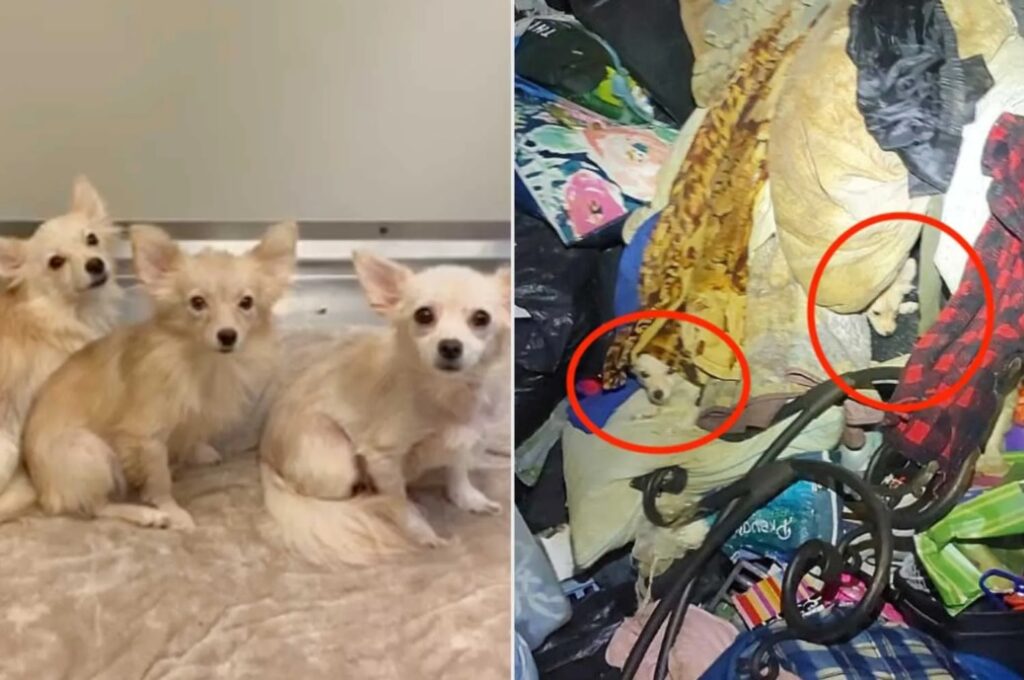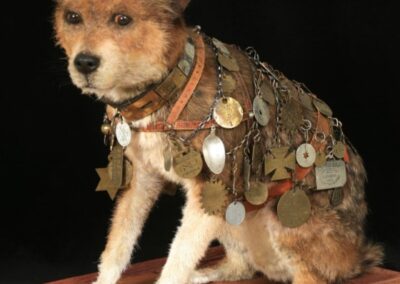
They weren’t just pets—they were survivors.
In an abandoned apartment in Vista, California, a shocking rescue unfolded: 11 dogs and 2 cats locked inside a unit so full of junk and debris that they’d carved out tunnels just to move.
After a landlord reported an absent tenant with pets, the local humane society answered the call—and found something far worse than neglect.
When officers from the local Humane Law Enforcement team entered the two-bedroom unit, what greeted them wasn’t just mess—it was despair.
Floor to ceiling, the apartment was packed with trash, household items, mountains of debris. The animals were there—hidden under furniture, creeping through makeshift tunnels of garbage.
Dogs that should have been cuddled and safe were instead scratching fleas, limping on overgrown nails, navigating a maze where life should never have been.
The rescue took four days. They needed large dumpsters, heavy lifts, more personnel than typical. It wasn’t just about entering and walking out.
It was a careful operation to ensure every animal was accounted for—and safe.
During that time, the animals were pulled out, medically assessed, treated for skin conditions and parasites, and ferried to a rescue campus nearby.

Among the 13 rescued were small breed dogs—Pomeranians, Chihuahuas—who had lived in that stifling environment, unseen and unheard.
They hadn’t barked for help; they were too trapped. They didn’t show up in complaint calls; their lives were hidden beneath the junk.
And the cats? Quiet. Invisible. But still survivors.
Why does this kind of rescue matter? Because it shines a light on a reality too many ignore: animal hoarding isn’t just “too many animals.”
It’s collapse. It’s silence. It’s lives hidden in plain sight.
The humane society’s statement said it bluntly: “Sadly, situations like this happen when pet owners become overwhelmed or face personal challenges.”
Today, those 13 animals are safe—though their journey isn’t over. They’re in emergency care at a campus equipped to help them heal.
Meanwhile, the shelter is pleading for help: adopt, foster, donate. Because the shelter is nearly full—housing hundreds of animals—and this rescue has added to the pressures.
For every dog and cat found in the mess, this rescue holds a dual truth: one, neglect hurts. Two, rescue matters.
The moment the debris was cleared, those animals emerged into light. They could breathe. They could burst into wagging tails.
Their tails held stories of survival—yet also stories of hope.

Think about the little dog that spent months hidden under rubbish. Think about the cat that couldn’t walk freely because stacks of junk blocked escape.
They can now live another chapter—if they have the chance. Because once cleaned, treated, and safe, each animal is put up for adoption.
Each one can be given a life where they don’t have to tunnel through mess—they get to run across open floor. They don’t have to hide under debris—they get a couch.
They get love. They get you.
Rescue isn’t just carrying an animal to a cage. It’s lifting a story out of darkness. It’s saying: “We see you. You matter.”
And it’s giving them a chance to become someone’s best friend rather than someone’s secret.
If you scroll past “13 animals rescued,” stop for a second. Because behind each number is a dog who didn’t give up.
A cat who didn’t stop trying. And a team who wouldn’t walk away.
Adopt, foster, donate. Because when you support rescue, you’re turning tunnels of trash into open spaces of trust.
You’re turning hidden suffering into visible love.



